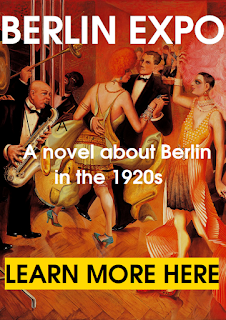This year, the
centenary of the Bauhaus is celebrated. The Staatliches Bauhaus (The
State’s house for the construction) was a center for new ideas and
consequently attracted progressive architects and artists. The
Bauhaus School has become a symbol of modern architecture worldwide,
because of its educational theory and buildings, and it is
inseparable from the name of the architect Walter Gropius.
"Architects,
sculptors, painters, we must return to manual work! There is no
essential difference between artist and craftsman. The artist is but
an inspired craftsman. "
In his 1919 Bauhaus
Manifesto, Gropius sums up his school's thinking : breaking the
line between applied and fine arts. He opened the Bauhaus School in
Weimar, that small town in central Germany, the same one that gave
its name to the German Republic of 1919-1933. After the First World
War, Gropius dreamed of a more egalitarian world, where dwellings,
clothes, everyday objects would also be aesthetic objects, accessible
to all.
This year of 2019,
at the Berlinische Galerie, an anniversary exhibition will be held,
called Original Bauhaus. The curator Nina Wiedermeyer explains: "The
social component is part of the Bauhaus utopia. The people behind
Bauhaus wanted to improve the world. "
Walter Gropius
brought to Weimar artists of all disciplines, with different methods
and characters. Among the best known, Paul Klee and Vassily
Kandinsky, both responsible for the basic theoretical training of
students. Also, Henry van de Velde, Hannes Meyer, Laszlo Moholy-Nagy.
In an exercise that has since become famous, Kandinsky asks his
students to pair one of the primary colors (red, blue, yellow) with
one of the three basic forms (triangle, circle, rectangle).
What is called
"design" today was then only in its infancy. Students are
encouraged to experiment with new shapes, new materials, new colors.
Within the school, they painted on glass, theater, typography,
weaving with cellophane, carpentry ... Among the most famous objects
produced in the Bauhaus, there were the Wassily chair, by Marcel
Breuer and the teapot of Marianne Brandt.
"There is no
Bauhaus style," says Nina Wiedermeyer. "Gropius himself
insisted on it. It was a multicultural school where students had very
different styles. "
An avant-garde
philosophy that displeased the National Socialist Party, which came
to power at the local level already in the 1920s. The school was
forced to move to Dessau in 1924, then to Berlin in 1932. For
Goebbels, the Bauhaus belongs to the "degenerate art" and
is a symbol of "cultural Bolshevism". The school was
dissolved in 1933, a few months after Hitler's conquest of the power.
Many Bauhaus alumni would teach in the United States. Walter Gropius himself headed the design school of Harvard University from 1937. Others settled down in Tel Aviv and built more than 4,000 buildings, most of them classified as World Heritage by Unesco. The dissolution of the school, far from killing the movement, contributed to its internationalization and its perpetuation.
Exhibitions :
In Berlin: original
bauhaus, 6.9.2019 - 27.1.2020, Berlinische Galerie.
In Weimar: "The
Bauhaus comes from Weimar », from April 6th.
In Dessau, Bauhaus
Experimental Site, The Collection, Fall 2019.
 |
| Paul Klee's poster for the 1923 exhibition |
 |











































